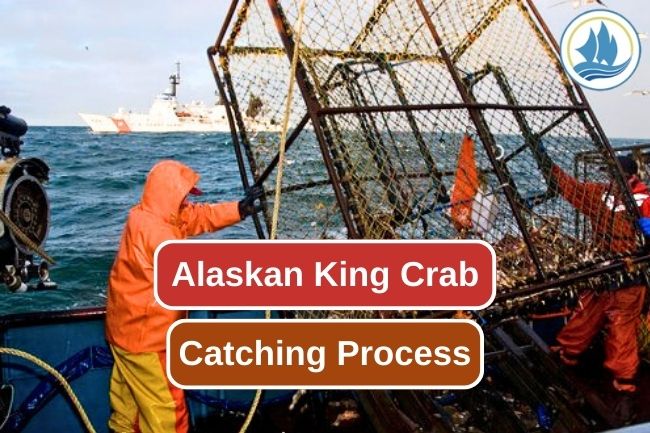Take a Look at Alaskan King Crab Catching Process
By. Nevanda - 13 Jul 2023
kelolalaut.com - The catching process for Alaskan king crab involves several steps to harvest these prized crustaceans from the cold waters of the Bering Sea and the Gulf of Alaska. Here's an overview of the Alaskan king crab catching process:
1. Setting Crab Pots
Fishing vessels, equipped with specialized gear, set out into the waters to locate suitable crabbing grounds. The vessels carry large, sturdy crab pots, which are metal cages with bait inside to attract the crabs. The pots are designed with entrances that allow crabs to enter but make it difficult for them to escape.
Read also: Exploring the Factors that Drive the High Price of Alaskan King Crab
2. Deploying and Soaking the Pots
The crab pots are carefully lowered into the water and deployed at specific locations where the presence of Alaskan king crab is anticipated. These pots are left to "soak" on the ocean floor for a predetermined period, typically ranging from several hours to a day or more. This allows enough time for crabs to find their way into the pots and feed on the bait.
3. Retrieving the Pots
After the soaking period, the fishing vessel returns to the location of the deployed pots to retrieve them. This process requires specialized equipment, such as hydraulic cranes or winches, to lift the heavy pots from the seabed. The crew must work swiftly and efficiently to bring the pots back on board.
4. Sorting and Measuring
Once the pots are brought aboard, the catch is sorted and measured. The crew separates the Alaskan king crabs from other species that might have been caught in the pots. They measure the crabs to ensure they meet the legal size requirements, releasing undersized or female crabs back into the water to maintain the population's sustainability.
Read also: Here’s How to Make Salmon Sushi at Home
5. Processing and Storing
The live Alaskan king crabs are processed immediately on board the fishing vessel or transferred to a processing facility on land. Processing involves cleaning the crabs, removing the shell and gills, and sometimes freezing them for transportation. The processed crabs are then carefully packed and stored to maintain their freshness and quality.
It's worth noting that the Alaskan king crab catching process is challenging and perilous, often taking place in harsh weather conditions and dangerous environments. The expertise, experience, and dedication of the fishermen are essential for a successful and safe harvest of these prized crustaceans.
Read also: Asian Delight! Cuttlefish with Oyster Sauce Recipe

Human Resource Management Challenges and Training Needs in Implementing HACCP Quality Standards within the Fish Processing Industry

The Legal Shark Value Chain: Identifying Critical Control Points for Cost Efficiency and Value Enhancement from Catch to Consumer

Global Trust Across Three Segments: How the HACCP System Ensures Premium Quality for Demersal, Pelagic Fish, and Legal Shark Product Utilization
.jpg)


 in Meeting Global Protein Demand Sustainably.jpg)

